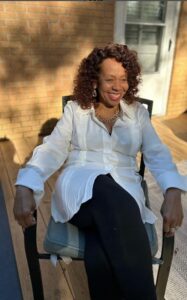Table of Contents
As a child, Brian Collier was told he would be lucky to see his 21st birthday because he was born with sickle cell anemia (or sickle cell disease SCD). The 54-year-old has an inherited disorder that impacts his red blood cells, which can be stiff and pointed instead of soft and round. Those cells can cause anemia and pain. One in 365 Black Americans is born with the condition, while 1 in 13 of us are born with sickle cell trait (SCT).
Both of Collier’s parents had the trait, so he had a 25% chance of being born with the disease.
Earlier this month, when the FDA announced approval for Casgevy and Lyfgenia, two gene therapy treatments that target SCD, Collier was already aware of them because his hematologist thought he might be a good candidate, even though he is in his fifties. But he has adopted a wait-and-see attitude about these breakthroughs.

But Collier has seen many treatments throughout his life, including penicillin, folic acid, and hydroxyurea, to name a few. He spent much of his childhood in the hospital, starting with a splenectomy at six months old. “I came out of the womb with sickle cell anemia, but when I was practically living at the hospital, I knew my life was different,” he recalls. “I missed anywhere from a few weeks to a few months of school because of a sickle cell crisis or episode.”
According to Johns Hopkins, a crisis occurs when blood flow is blocked to an area because the sickled cells have become stuck in the blood vessel. The pain can occur anywhere but most often in the chest, arms, and legs. Infants and young children may have painful swelling of the fingers and toes.
Collier explains that SCD impacts individual patients differently. Growing up in Chicago, being in cold air or water for too long could trigger a crisis. Yet he became a swimmer and a lifeguard in high school by developing preventative strategies that helped him avoid triggers.
Sickle Cell Disease Takes a Mental Toll
Twenty-four-year-old Amanda Christopher explains that having SCD is both a physical and psychological battle. As a child, she was bullied and labeled contagious by her peers at school. “Aside from the natural pain and suffering one goes through physically, the mental battle was the hardest to overcome. I truly know firsthand what it is like to feel trapped and tortured mentally and physically in your own body,” she says. “No one discussed the mental experiences sickle cell brings: depression, suicidal moments, and frequent hospital stays.”
Amanda Christopher sees her experiences with the disease as a blessing and curse because they have made her more compassionate toward other people’s struggles.
Karen Christopher, Amanda’s mother, opted to add a holistic approach to her daughter’s disease from an early age. “Having a child with SCD made us more health conscious in general. I never wanted Amanda to feel different,” she says. “My main objective was for Amanda to have a quality of life, which I felt the medical community alone could not offer her.” Collier took a similar tactic when he reached adulthood, altering his diet and lifestyle choices (no meat, dairy, or fried foods) and adding a holistic practitioner to his team of doctors. For the Christophers and Collier, holistic approaches have lessened their incidences of crises and hospitalization.
Amanda Christopher has concerns about these breakthroughs. “I am always happy to hear about medical advances within our community, but I would love a wider spectrum of natural treatments studied and offered on the same mainstream scale as other medications and procedures,” she says.

What You Should Know About the Gene Therapies?
How They Work
Casgevy, is made by Vertex and CRISPR Therapeutics. It uses CRISPR/Cas9, a flexible and powerful gene-editing technique, to modify a person’s blood stem cells so that they produce fetal hemoglobin, a form of the oxygen-carrying protein that usually goes away shortly after birth. According to the FDA, fetal hemoglobin (HbF) can prevent the sickling of red blood cells. At the same time, Lyfgenia therapy by Bluebird Bio Inc. takes a different tack. It uses a virus to slip a gene inside patients’ blood stem cells that allows them to produce healthy hemoglobin, and as a result, the crescent-shaped red blood cells don’t form.
There are about 100,000 people living with sickle cell disease in the United States. but only 20,000, who are 12 and older and are experiencing debilitating pain, may be eligible for these treatments.
These Therapies Take Time and Have a High Price Tag
The price tags for each of these treatments are pretty high. $2.2 million for Casgevy and $3.1 million for Lyfgenia. However, both companies estimate the lifetime cost of treatment for a patient with recurrent crises to be between four and six million dollars over their lifetime. “With one at just over $2 million and the other over $3 million, I wonder how [our community] will benefit. That’s a significant concern for me,” Collier notes. And FYI, these price tags mean distributing these treatments in Africa may be cost-prohibitive.
The process is also resource-extensive, requiring prolonged hospital stay and monitoring. It may take up to a year to complete. And there are some warnings. Like a bone marrow transplant, each of these new therapies requires ‘conditioning treatments,” which involve patients receiving several rounds of chemotherapy to wipe out their bone marrow (which makes their blood cells and platelets) in preparation for receiving the new cells created by these therapies.
However, the conditioning treatment may cause infertility, so egg retrieval options would need to be discussed, and insurance coverage varies for the process. And Lyfgenia does come with what is called a “black box warning” that it may cause blood cancer.
Then there is the question of coverage. Bluebird Bio has reported that it has already signed a large reimbursement deal and is also in discussions with 15 Medicaid agencies that cover 80% of SCD. Vertex estimates that many of the 16,000 eligible for their treatment are also covered by Medicaid.
They Are Not Widely Available Yet
Only nine hospitals have been authorized to do Casgevy treatments (more are expected). Most of these locations are facilities focused on the treatment of children:
- Boston Medical Center
- Children’s National Hospital in Washington, D.C.
- City of Hope Children’s Cancer Center in Los Angeles
- Medical City Children’s Hospital in Dallas
- Methodist Children’s Hospital in San Antonio
- Nationwide Children’s Hospital in Columbus, Ohio
- The Children’s Hospital at TriStar Centennial in Nashville, Tenn.
- The Arthur G. James Cancer Hospital and Solove Research Institute in Columbus, Ohio
- University of Chicago Medicine Comer Children’s Hospital
Lyfgenia is set for commercial launch early next year and will be distributed at their qualified treatment centers, which will receive additional training.
However, a potential stumbling block is a lack of hematologists who treat adults. A 2019 study reported a shortage of classically trained hematologists who can treat patients transitioning out of pediatric care, especially in rural areas. And when it comes to sickle cell disease, more mentorship is also needed in the profession.
“Many of the treatments offered at the moment, including the CRISPR cure, are not monetarily accessible to the communities of people who need it,” Amanda Christopher says. “I want to see more compassion from medical professionals so that they can study the illness more humanely and find ways to treat us sicklers without further pain being involved. I feel the same way about other illnesses, such as cancer as well. It just takes the right group of scientists.”
Her mother notes that she has seen more television commercials and more research material readily available today on SCD. Karen Christopher says, “I am extremely happy that the medical community has finally given SCD the attention it has long needed, and the future of having SCD gives hope and a future to its patients.”

While Collier is unsure about how these new therapies will directly impact his SCD journey, he sees the potential for the people coming behind him. “Those who are maybe 10 or 20 years old, newborns that are going to be coming into this world and still have to deal with the disease,” he explains. “I am excited for them and their families because it can potentially change the trajectory of their lives from a health perspective. But as a patient that has been dealing with SCD for decades, I’ll wait and see.”





More Stories
Punching Through History: A Spotlight on Boxing Culture in England’s Reading
The Link Between Vitamin E Intake and Parkinson’s Disease
Tips and Techniques for Moving Past Binge Drinking